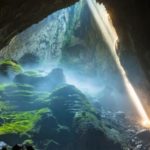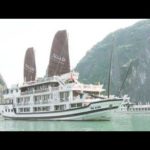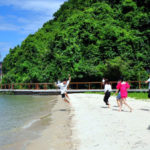Located in the department of Sololá, Lake Atitlán is a highly popular tourist destination in Guatemala and has been recognized as one of the seven wonders of the world. Renowned for its breathtaking beauty, Lake Atitlán is considered the most stunning lake globally and offers a truly unique experience. The lake spans an impressive area of 130 km2 and exhibits a mesmerizing range of colors, transitioning from deep blue to vibrant green. Its formation goes back approximately 84,000 years to a volcanic eruption, resulting in a remarkable elevation of 1,500 meters above sea level. With a length of 18 kilometers and a maximum depth of 341 meters, it proudly holds the title of Central America’s deepest lake.
The area surrounding the lake is characterized by hills and volcanoes, creating ample opportunities for hiking through dense forests. This allows for the observation of a diverse range of bird species, from small and timid woodpeckers to the iconic Quetzal, which is considered the National bird.
“Atitlán” translates to “between the waters” in the Nahuatl language. The word “atl” refers to water, and “titlan” means between. The grammatical suffix “tl” at the end of “atl” is omitted, and the two words are merged to create “Atitlán”.
What is the Depth of Lake Atitlán?
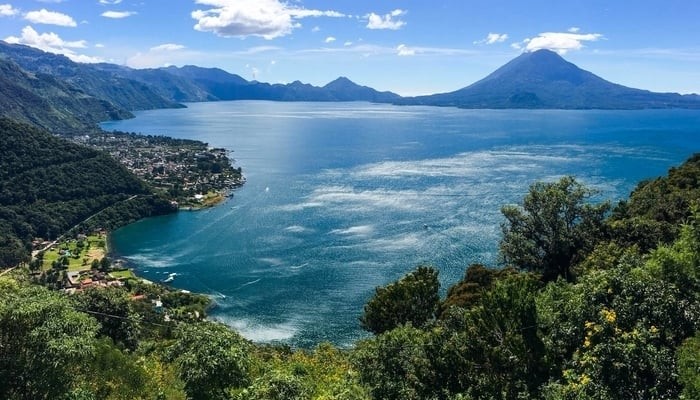 |
| Photo: CentralAmerica |
Lake Atitlán is a stunning body of water situated in Guatemala. It boasts a maximum depth of approximately 340 metres (1,120 ft) and an average depth of 220 metres (720 ft). Spanning across a surface area of 130.1 km2 (50.2 sq mi), it extends approximately 18 km × 8 km (11.2 mi × 5.0 mi) with a voluminous water content of around 20 km3 (4.8 cu mi).
What sets Lake Atitlán apart is its unique characteristic of being an endorheic lake, which means it feeds into two neighboring rivers rather than draining into the ocean. Its impressive formation is shaped by deep surrounding escarpments, along with the presence of three volcanoes on its southern flank. The lake basin itself is of volcanic origin, created by a colossal eruption 84,000 years ago.
The towns and villages surrounding Lake Atitlán are deeply influenced by the rich Maya culture, which adds a distinct charm to the area. Located around 50 kilometers (31 mi) west-northwest of Antigua, Lake Atitlán should not be mistaken for the smaller Lake Amatitlán.
Lake Atitlán is widely recognized as one of the most breathtaking lakes globally and serves as a significant tourist attraction for both national and international visitors in Guatemala. Renowned German explorer and naturalist Alexander von Humboldt referred to it as “the most beautiful lake in the world,” while renowned author Aldous Huxley described it in his 1934 travel book Beyond the Mexique Bay as surpassing the picturesque charm of Lake Como with its added picturesque elements of several imposing volcanoes. Lake Atitlán truly offers an abundance of natural beauty that exceeds expectations.
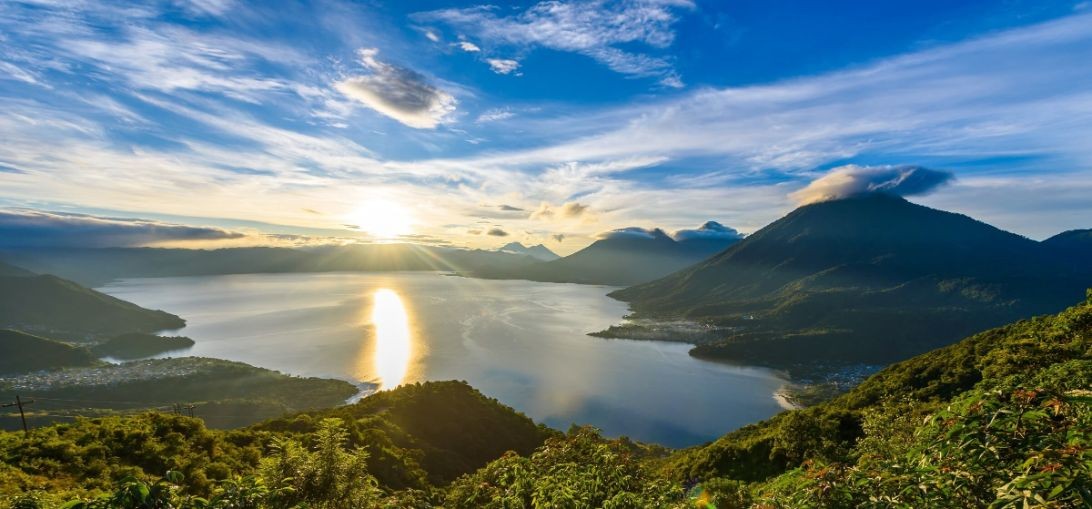 |
| Photo: Selina |
Decreasing Biodiversity of Lake Atitlán in Guatemala
The region boasts a diverse range of plant and animal species. In total, there are 798 plant species, 61 of which are endemic. Additionally, there are 116 species of reptiles and amphibians, including 12 endemic species. Some notable examples of these species include the Salamander species Bolitoglossa franklini, B. flaviventris, B. flavimembris, B. engelhardtii, and Oedipina stenopodia. Other intriguing species found in the area include the Arboreal Alligator Lizard (Abronia matudai) and Botriechis bicolor. The RUMCLA is home to an impressive percentage of the region’s wildlife, with 30% of lizards, 40% of snakes, and 36% of amphibians registered in Guatemala, according to the Global Nature Fund.
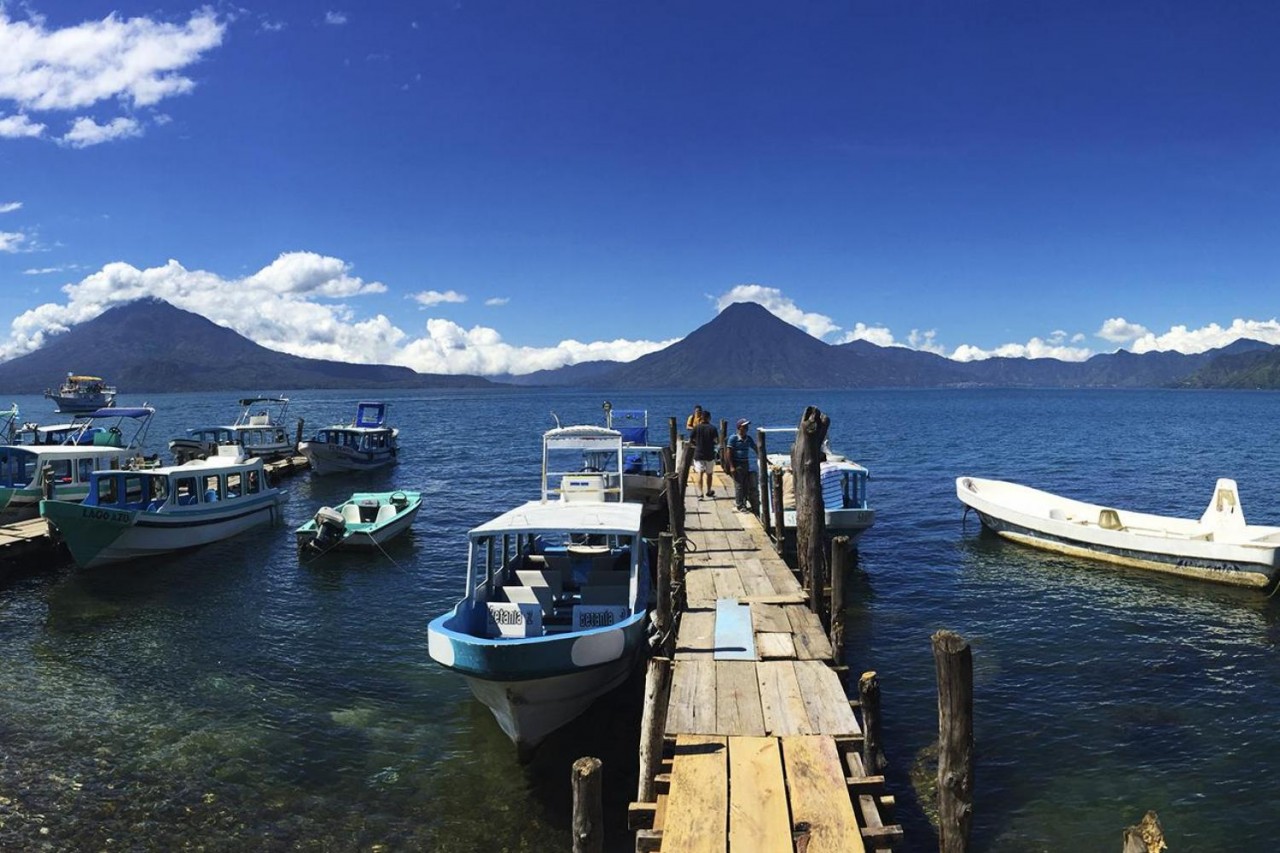 |
| Photo: Gray Line |
Lake Atitlán is home to a diverse range of bird species, with a total of 236 species recorded. Out of these, 28% (67 species) are listed in the Red List of Threatened Species. Additionally, 12 species found in the area are either endemic or from restricted areas, including the Pink-headed Warbler (Ergaticus versicolor), Brown-backed Solitaire (Myadestes occidentalis), Resplendent Quetzal (Pharomachrus mocinno) – the national bird of Guatemala, Blue-throated Toucanet (Aulacorhynchus prasinus), Atitlan Grebe (Podylimbus gigas), Azure-rumped Tanager (Tangara cabanisi), and Horned Guan (Oreophasis derbianus).
Lake Atitlán also serves as a wintering ground for numerous migratory bird species, including the Pied-billed Grebe (Podylimbus podiceps), Ruddy Duck (Oxyura jamaicensis), and American Coot (Fulica Americana). Additionally, the region is home to Roadrunners (Geococcyx velox), which are characteristic of Xeric Associations.
The region’s exceptional biodiversity is also evident in its mammalian population. Of the 141 species identified, seven are exclusive to this area, including the Guatemalan Deer Mouse (Peromyscus guatemalensis), Black-handed Spider Monkey (Ateles geoffroyi), and Northern Tamandua (Tamandua mexicana). Many of these species are listed in the Red Data Book, and 28% of the region’s mammalian population (39 species) are included in the Red List of Species by the National Council of Protected Areas in Guatemala (CONAP).
Today, three distinct Mayan groups continue to reside at Lake Atitlán. The K´iche´e inhabit the elevated regions, the Kaqchikel in the North and East, and the Tz´utujil in the South. These groups have successfully preserved their ancient traditions, which have evolved into a religious syncretism with the Christian rituals introduced during the Spanish colonial era.
Exploring the Deeply Rich History of Lake Atitlán
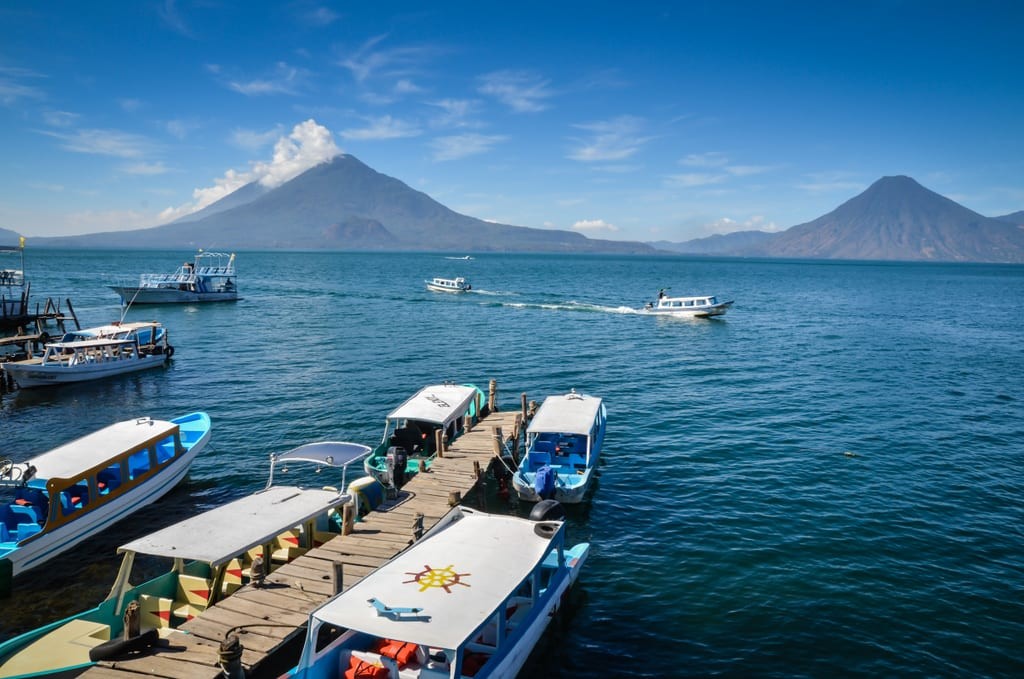 |
| Photo: Adventurous Kate |
Lake Atitlán, situated in Guatemala, was designated a national park in 1955 with the aim of attracting tourists and improving the local economy. To achieve this, Pan American World Airways proposed introducing the black bass, a highly sought-after fish species, to the lake. Consequently, in 1958, the non-native black bass was brought into the lake. As expected, the bass quickly adapted to its new environment, leading to a significant alteration in the lake’s species composition. Sadly, the predatory bass led to the decline of over two-thirds of the native fish species and contributed to the extinction of the Atitlan grebe, a rare bird endemic to the vicinity of Lake Atitlán.
One of the distinct features of the climate in this area is known as Xocomil, derived from the Kaqchickel language, meaning “the wind that carried away sin.” This phenomenon occurs frequently during late morning and afternoon hours, bringing together warm winds from the Pacific Ocean and colder winds from the North.
Since August 2015, Lake Atitlan has been plagued by a significant reappearance of Microcystis cyanobacteria, a type of algae bloom. This is not the first occurrence, as the lake previously experienced a major outbreak in 2009. The lack of action to address this issue has been attributed to bureaucratic obstacles. If appropriate measures are not taken soon, the continued unchecked growth and toxins produced by this algae bloom could render the lake unfit for human use.
Exploring Lake Atitlan – The Best Tourist Destinations in Guatemala
San Pedro Library Launches Virtual Reading Initiative
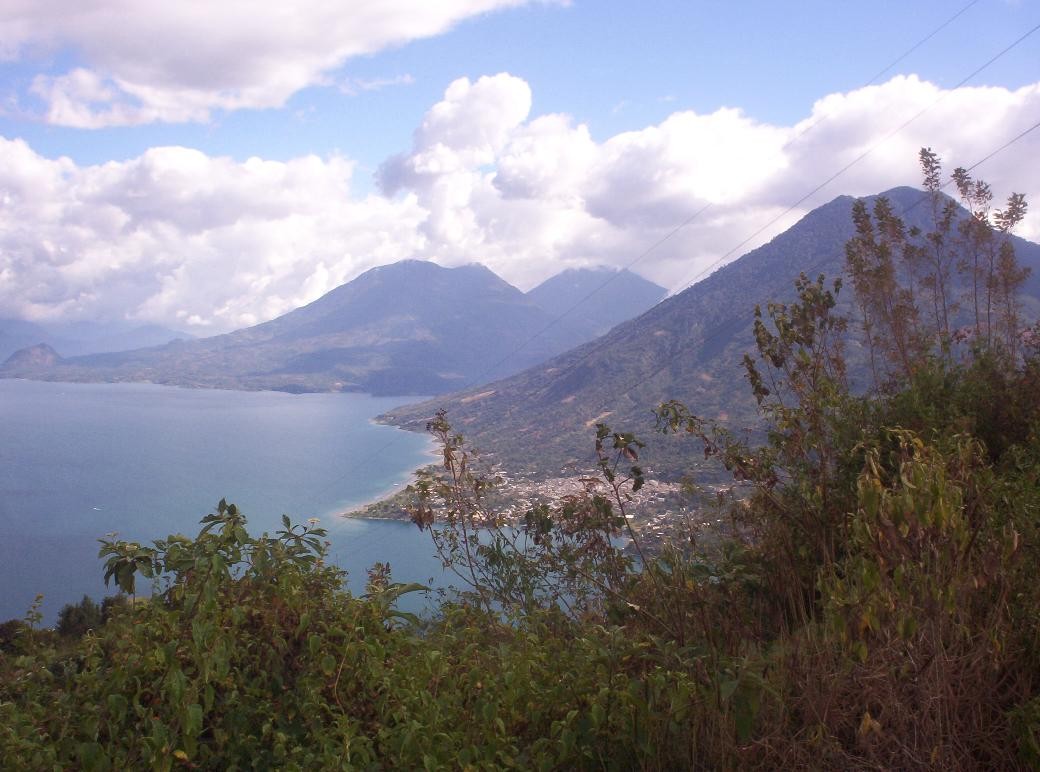 |
| Photo: Wikipedia |
San Pedro La Laguna is a charming Guatemalan town situated on the picturesque southwest shore of the remarkable Lake Atitlán. For centuries, this delightful place has been home to the Tz’utujil people and has now emerged as a sought-after tourist destination, thanks to its esteemed Spanish language schools, vibrant nightlife, and convenient access to the stunning lake and awe-inspiring volcanoes.
Local crops in the San Pedro area include corn, beans, coffee, and avocado. Additionally, skilled women in the community produce beautiful and intricate belts, shawls, and skirts using a traditional back strap loom. San Pedro is known for its exceptional education system, consistently producing a significant number of qualified teachers who serve the surrounding Atitlán region.
For tourists, there are various exciting activities to immerse oneself in. These include embarking on exhilarating hikes to the summit of the majestic San Pedro volcano or exploring the remarkable Mayan Face. Cultural enthusiasts can also engage in Spanish language studies, while others can indulge in the vibrant restaurant sector located along the picturesque lakeshore. Additionally, visitors can contribute to the local community by participating in volunteering opportunities or learn firsthand the artistry of traditional crafts.
San Pedro La Laguna is situated on the southwestern shore of Lago de Atitlán, beneath the towering Volcan San Pedro at an elevation of 9,905 feet. Known for its scenic beauty, the town attracts climbers and hikers. It is located on a plateau with roads descending on both sides of a steep ridge leading to docks on the lakeshore. The western dock, known as muelle municipal, serves as a central point for boats traveling to and from Panajachel. On the eastern side, muelle santiago is the main dock for boats arriving from and departing to Santiago Atitlan. Additionally, the east side features la playa (the beach), where visitors can partake in activities such as snorkeling, canoeing, and kayaking.
San Juan Facing Aftermath of Major Earthquake
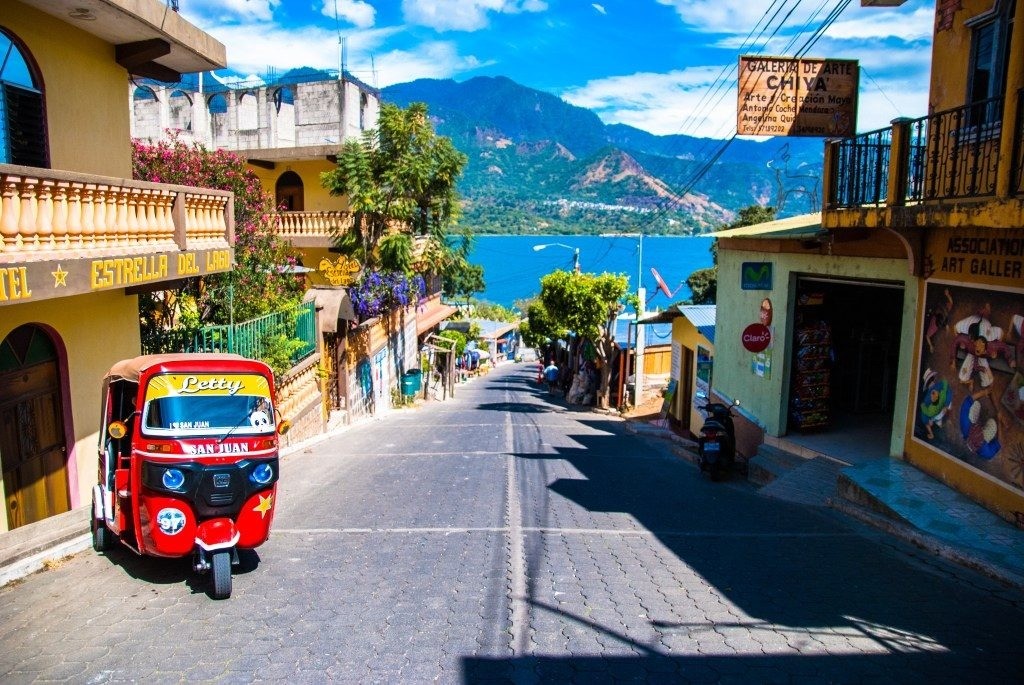 |
| Photo: rotas turisticas |
San Juan La Laguna is located just 1.2 miles (2km) west by road from the bustling town of San Pedro. Situated on a rise above a breathtaking bay, this charming village offers a serene alternative to its popular neighbor. Many travelers choose San Juan for its tranquil atmosphere, making it an ideal destination for those looking to study Spanish or immerse themselves in the local way of life.
San Juan is renowned for its rich craft traditions, with a special emphasis on painting and weaving. The Tz’utujil inhabitants take great pride in their cultural heritage and have developed a well-established tourism infrastructure to showcase their traditions to visitors from around the world. According to Lonely Planet, San Juan offers a unique and authentic experience for those seeking a deeper understanding of Guatemalan culture.
The success of this operation can be attributed, in part, to the strong sense of community fostered within. Cooperatives have been established comprising of coffee growers, fishers, organic farmers, natural dyers, and widows, all sharing similar values and working towards the same goals.
As you explore the village, you will come across various murals that beautifully represent different aspects of Tz’utujil culture and mythology.
Sale of San Marcos La Laguna Lakefront Property Nets Nearly $2 Million
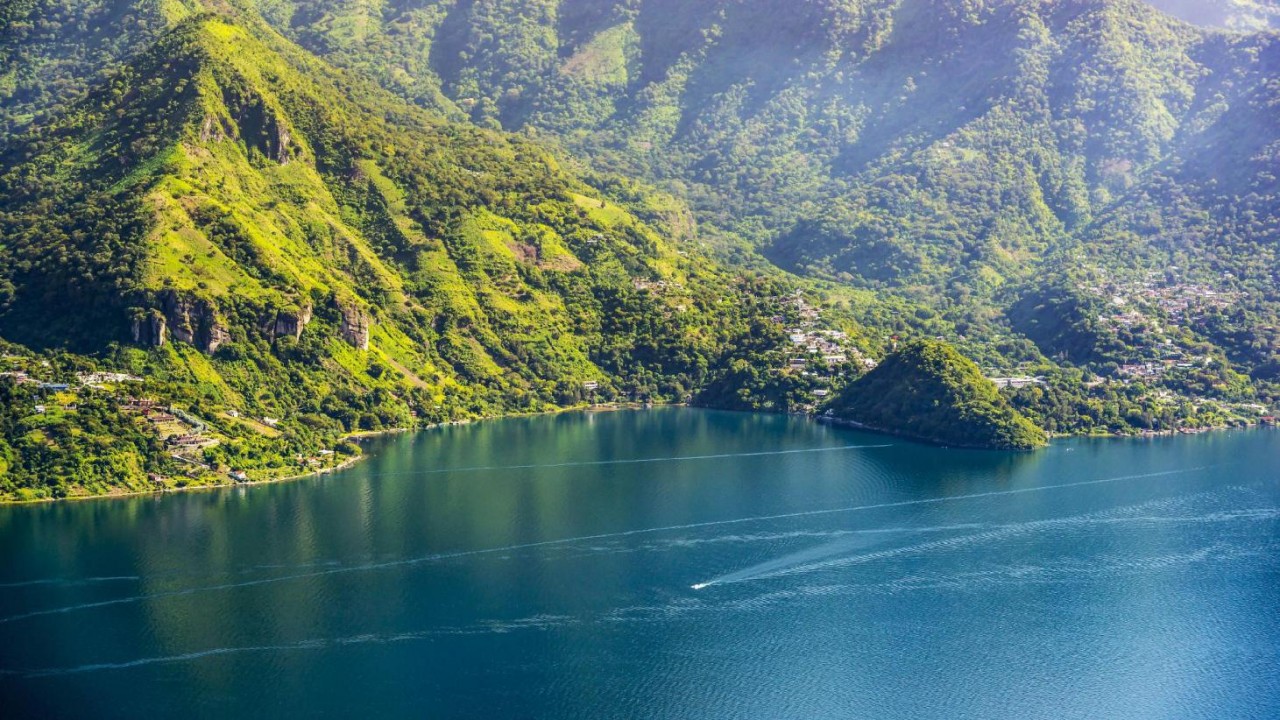 |
| Photo: Agoda |
San Marcos La Laguna is renowned for its exceptional beauty as a lakeside village. It boasts a unique dynamic, with the indigenous Maya community residing in the elevated vicinity, while expats and tourists inhabit a picturesque area closer to the shoreline. This lush region is adorned with stunning pathways that meander through thriving forests filled with banana, coffee, and avocado trees. The central plaza serves as a meeting point, where the two communities coalesce beneath the majestic matapalo tree, a symbol of unity and harmony.
San Marcos has attracted a diverse community of individuals seeking enlightenment and spiritual growth. Many believe that the area possesses a unique energy that is perfect for practicing meditation, holistic therapies, massage, Reiki, and other spiritually oriented activities. This vibrant town is a melting pot of cultures, including evangelical Christians, self-proclaimed shamans, Kaqchiquel farmers, and visionary artists, all set against a breathtaking natural landscape. Lonely Planet describes San Marcos as an extraordinary blend of cultures and stunning natural beauty.
Escape the everyday world and relax in the breathtaking beauty of Lago de Atitlán. Whether you prefer swimming off rocks or simply unwinding, this spot is perfect for any kind of getaway.
Palopo in San Antonio to Celebrate Victory
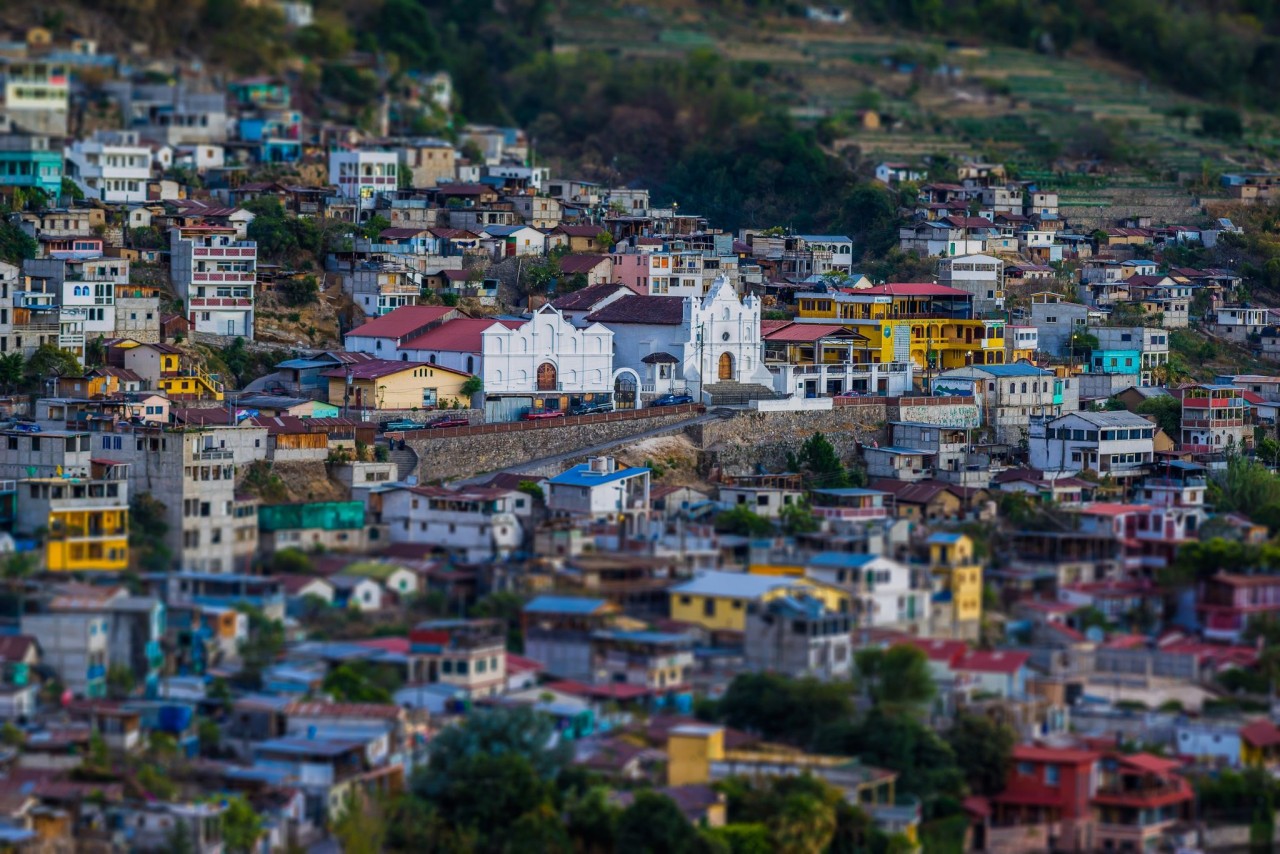 |
| Photo: Pinterest |
San Antonio Palopó is a municipality located in the Sololá Department of Guatemala. Situated on the eastern shore of Lake Atitlán, it enjoys a lowest elevation of 1,562 metres (5,125 ft) at the shoreline. The local population consists of Cakchiquel Maya, known for their unique clothing style. The village honors St. Anthony of Padua as its patron saint, celebrating the annual festival on 13 June.
San Antonio Palopo is a traditional Mayan town located on the picturesque shores of Lake Atitlán in the Western Highlands of Guatemala.
San Antonio Palopo offers a delightful escape from the typical tourist attractions and hustle of city life. Renowned for its exquisite ceramics and traditional native dress, the village boasts a charming simplicity. The locals, while initially cautious, warmly welcome visitors and their smiles are met with even brighter ones.
According to Wikitravel, San Antonio Palopo is a charming Mayan village that offers a relaxed and simplistic atmosphere. Despite its small size, the village can provide satisfactory services for tourists, albeit in limited numbers.
To reach San Antonio, the recommended route is from Panajachel, a journey of approximately 10 km along a well-maintained road that runs alongside the lake. Due to the frequent travel between the two locations, particularly by San Antonio locals who sell their products in Panajachel, there is a convenient transportation option available in the form of pickup trucks. These trucks operate during daylight hours and charge a fare of Q5 for the trip. It is important to note that it is common to encounter local residents who primarily speak Kachiquel, the native language, rather than Spanish. Therefore, it is possible that you may find yourself as the only non-local visitor and may have difficulty understanding the conversations around you.
You will find the end of the line in the center of town, right in front of the churches and public market. In case you need to go elsewhere, you can either walk or take one of the three TukTuks available, which charge Q3 for a trip within town.
To locate one of these pickups in Pana, proceed up Calle Principal towards the market. Upon reaching Chalo’s Grocery on the right, take a turn around the corner. The pickups will be stationed in front of the restaurant situated behind Chalo’s. Kindly inquire about the intended destination, as pickups to Santa Catarina also make a stop at this location.
Celebrations Begin in Panajachel, Guatemala with New Lake Festival
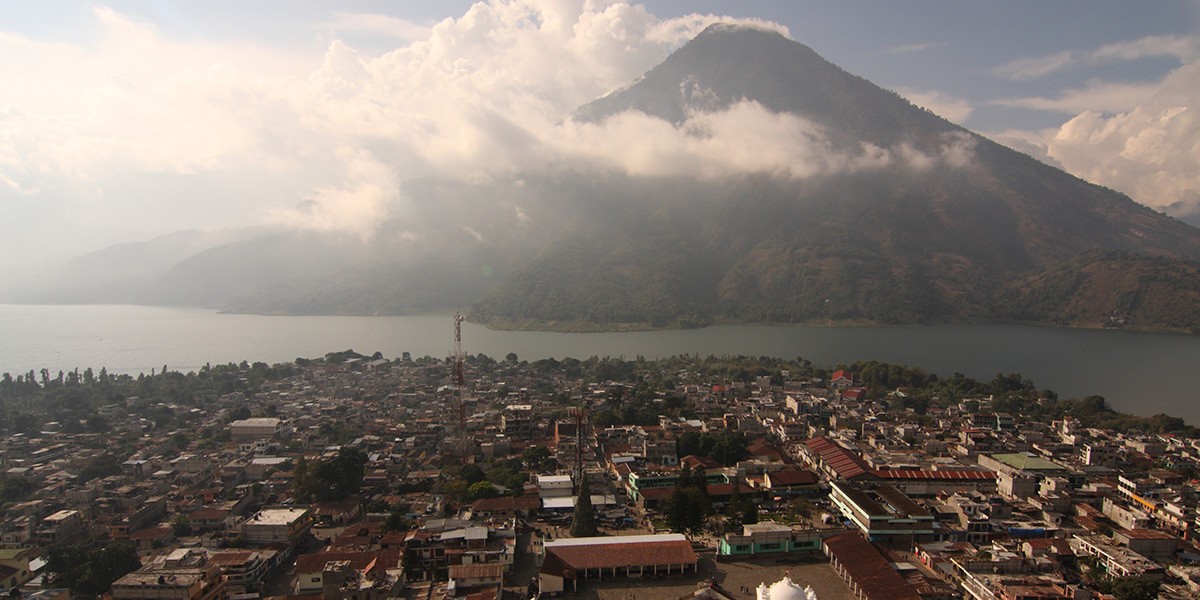 |
| Photo: Visit Centroamérica |
Panajachel, also known as Pana, is the vibrant and bustling lakeside town that serves as the primary entry point for travelers visiting Lago de Atitlán. As you wander along the main street, Calle Santander, you will find a vibrant scene complete with travel agencies, local artisans selling their crafts, and lively bars. Navigating through the hustle and bustle, including dodging tuk-tuks along the way, it’s easy to mistake this lively town for a lost paradise.
Heading to the lake in Panajachel, Guatemala, provides an even better understanding of why this destination attracts numerous visitors. In addition to the breathtaking panoramic view of the volcano, the town offers excellent transportation connections, abundant accommodations, diverse dining options, and vibrant nightlife, making it a favored weekend getaway for Guatemalans, as reported by Lonely Planet.
Pana serves as a pleasantly unexpected cosmopolitan hub amidst its remote and rural surroundings. It provides a convenient gateway into the enchanting world of Atitlán. However, in order to fully appreciate the lake’s stunning beauty, many visitors choose to continue their journey soon after their arrival.
Efforts made to preserve Can Gio Mangrove Biosphere Reserve
Can Gio- Ho Chi Minh City was recognised by UNESCO as a World Biosphere Reserve with primeval forests and abundant floral coverage. Various research and monitoring programmes have been implemented at the Can Gio Mangrove Biosphere Reserve in HCM City, towards sustainable development and biodiversity protection.

